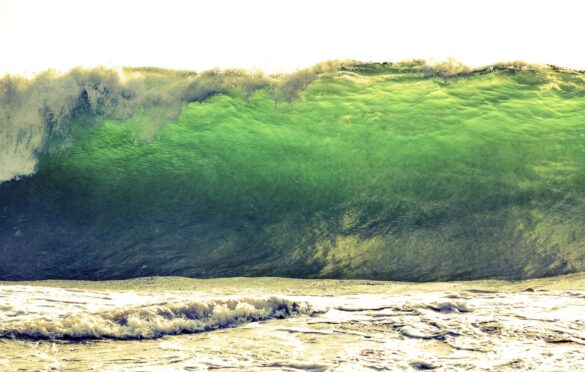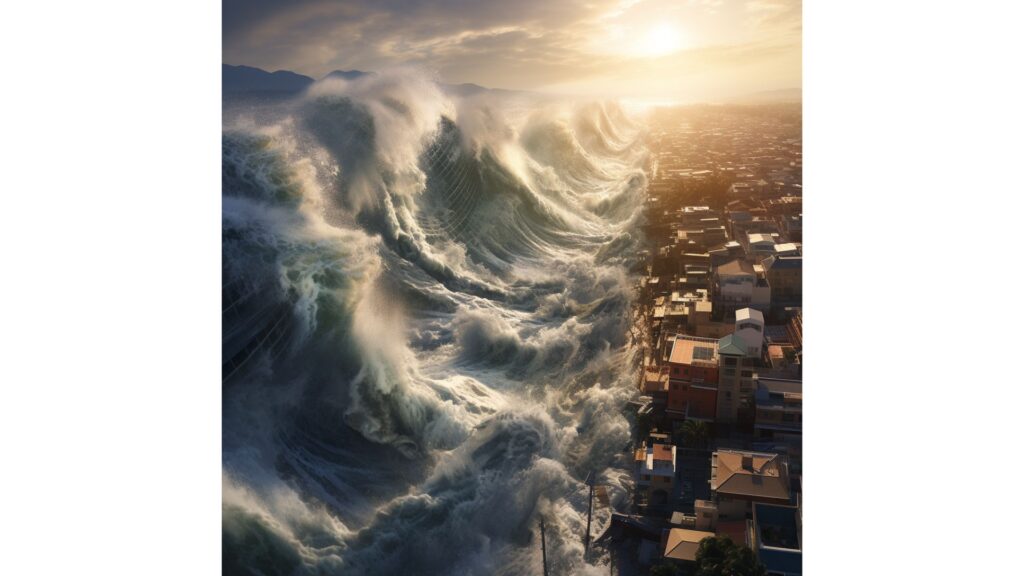What Is a Tsunami?

Introduction:
When the earth trembles and the seas roar, a natural phenomenon of immense power is unleashed upon the world – the tsunami. In this comprehensive guide, we will delve deep into the nature of tsunamis, exploring their origins, mechanics, impacts, and the measures we can take to mitigate their devastation. From the tranquil surface of the ocean to the awe-inspiring might of a tsunami, let’s journey through the waves that shape our planet.

What Is a Tsunami? Unveiling the Ocean’s Fury
A tsunami, originating from the Japanese words “tsu” (meaning harbor) and “nami” (meaning wave), is a colossal oceanic event triggered by an underwater disturbance. Unlike regular waves that are caused by wind, tsunamis are often initiated by earthquakes, volcanic eruptions, or even meteor impacts. These massive waves can travel across entire ocean basins, carrying an enormous amount of energy and potential for destruction.

The Origins of Tsunamis: Earth’s Tremors and Beyond
Earthquakes: The Principal Catalyst
Tsunamis are most commonly associated with earthquakes, particularly those occurring beneath the ocean floor. When tectonic plates shift along faults, immense stress builds up until it’s suddenly released in the form of an earthquake. If the seabed is displaced vertically during this seismic event, it sets in motion a series of waves that will eventually evolve into a tsunami.
Subheading: Volcanic Eruptions: Nature’s Cauldron
Volcanic eruptions, both beneath the sea and on land, can also set the stage for tsunamis. When an underwater volcano erupts, it can displace a significant amount of water, generating waves that radiate outward. These volcanic tsunamis, though less frequent than those triggered by earthquakes, can be equally destructive.
The Mechanics Behind Tsunamis: Unraveling the Ripple Effect
The Ripple Effect: From Ripples to Tsunamis
As a tsunami wave is generated, it doesn’t resemble the towering wall of water we often envision. Initially, it appears as a series of ripples, with wavelengths spanning tens to hundreds of kilometers and periods between waves ranging from minutes to hours. It’s in the deep ocean that these waves can travel at speeds exceeding 700 kilometers per hour, almost as fast as a jet airplane.
Amplification: The Journey to the Shore
As a tsunami approaches shallower waters near the coast, a process called wave shoaling occurs. The same energy that allowed the waves to race across the ocean is now compressed into a smaller volume of water. This compression causes the waves to increase in height dramatically, culminating in the towering surges that crash onto the shore.

The Aftermath: Devastation and Impact of Tsunamis
Coastal Destruction: Unleashing Nature’s Wrath
When a tsunami makes landfall, its immense energy and colossal waves can wreak havoc on coastal communities. Buildings are torn asunder, boats are tossed like toys, and vegetation is uprooted. The force of the waves can carry debris and sediment far inland, leaving a trail of destruction in their wake.
Human Toll and Environmental Ramifications
The human toll of a tsunami is immeasurable, causing loss of life, displacement of communities, and economic devastation. Beyond the immediate impact, tsunamis can lead to long-term environmental consequences. Saltwater intrusion, erosion, and destruction of habitats can reshape coastlines and disrupt ecosystems for years to come.
Mitigation and Preparedness: Navigating the Waves of Safety
Early Warning Systems: A Race Against Time
Given the catastrophic potential of tsunamis, early warning systems play a vital role in saving lives. Seismic sensors and ocean-bottom pressure recorders are strategically placed to detect underwater earthquakes and volcanic eruptions. When an event occurs, these systems provide crucial data to predict the tsunami’s arrival time and potential impact.
Community Preparedness: Knowledge as a Lifesaver
Educating coastal communities about tsunamis is essential for preparedness. Training residents to recognize natural signs, such as the rapid withdrawal of water from the shore, can provide valuable seconds to minutes before a tsunami hits. Evacuation plans, designated safe zones, and regular drills can empower individuals to respond swiftly and effectively.

FAQs About Tsunamis: Navigating Common Questions
Q1: Can a tsunami be triggered by a meteor impact?
Yes, although rare, a massive meteor impact in an ocean or sea can displace enough water to generate a tsunami. The energy released upon impact, coupled with the sudden displacement of water, can create waves with devastating consequences.
Q2: Are all earthquakes capable of causing tsunamis?
No, not all earthquakes can trigger tsunamis. Only underwater earthquakes that displace a significant volume of water vertically have the potential to initiate a tsunami. Most tsunamis are caused by large, shallow earthquakes along subduction zones.
Conclusion: Navigating the Unpredictable Waters
Tsunamis stand as a testament to the raw power of nature, a reminder that our planet’s forces are both awe-inspiring and formidable. By understanding their origins, mechanics, and impact, we can better prepare ourselves and our communities for these rare but devastating events. Through early warning systems, education, and global cooperation, we strive to minimize the human toll and protect our coastal landscapes from the fury of tsunamis. As we continue to unveil the mysteries of these oceanic giants, we inch closer to a safer, more resilient world.
